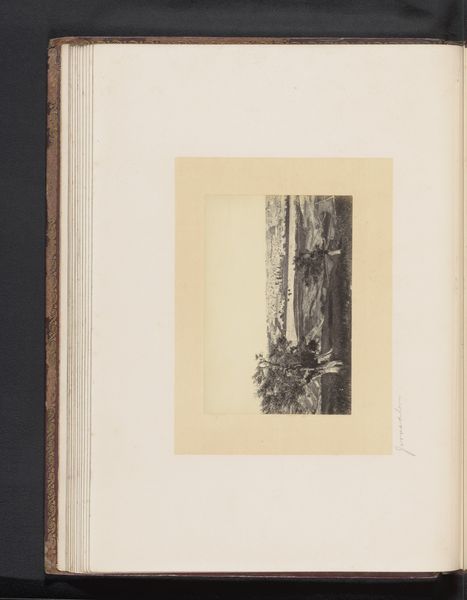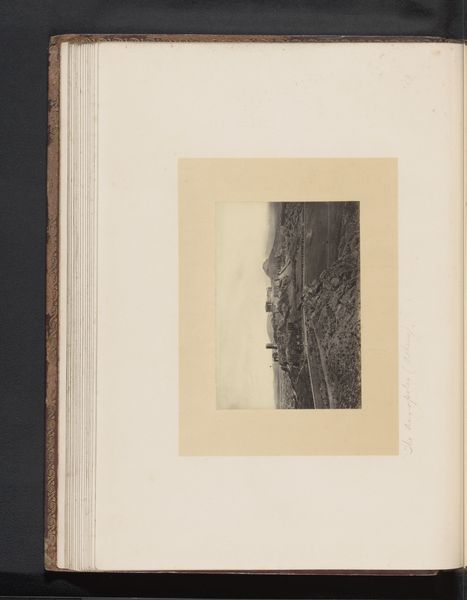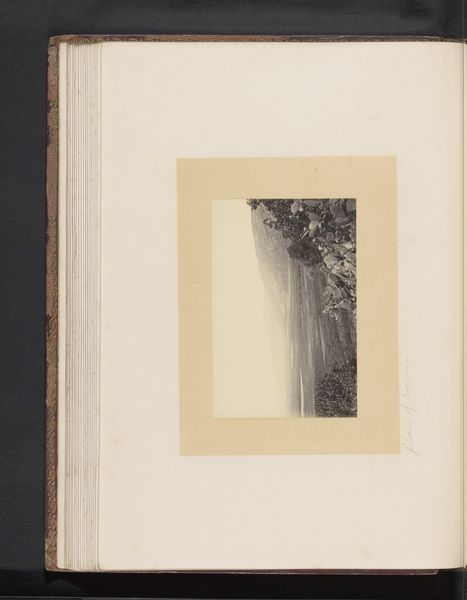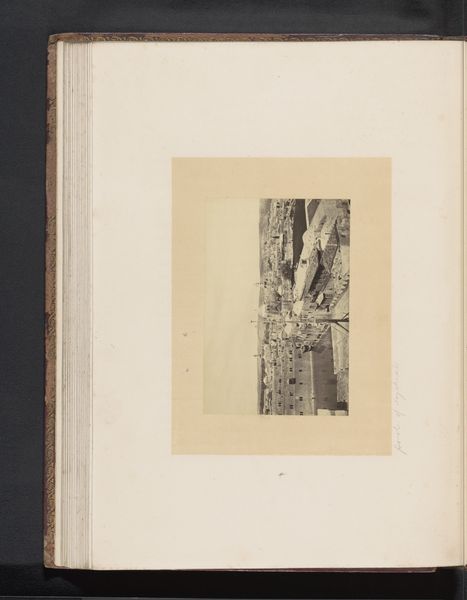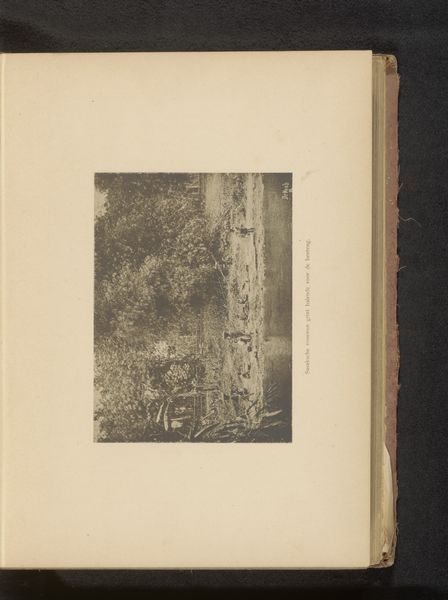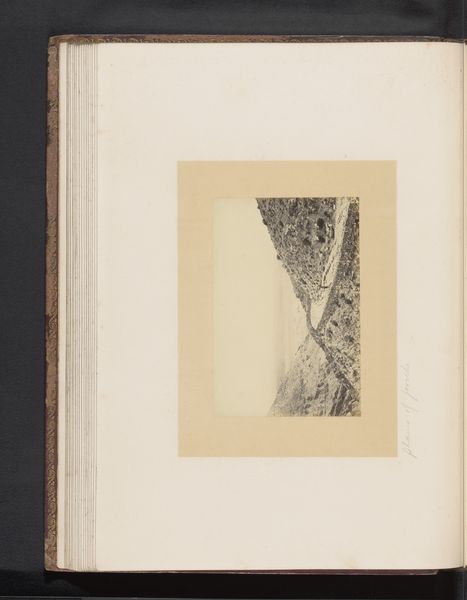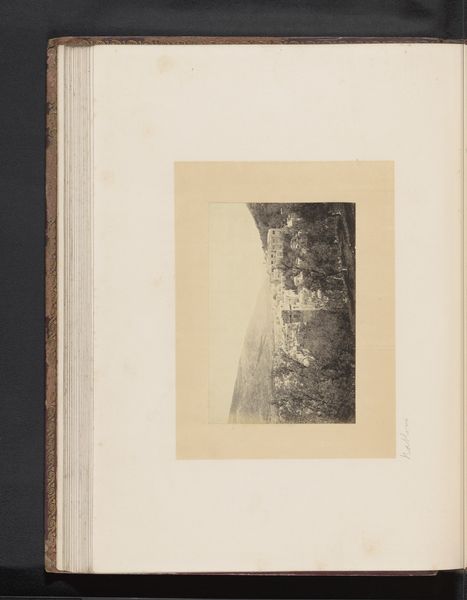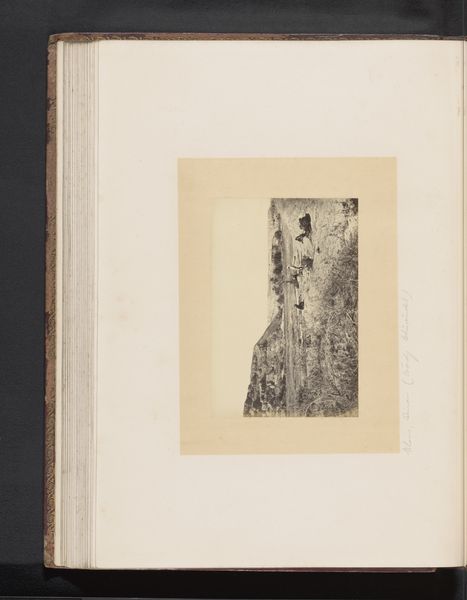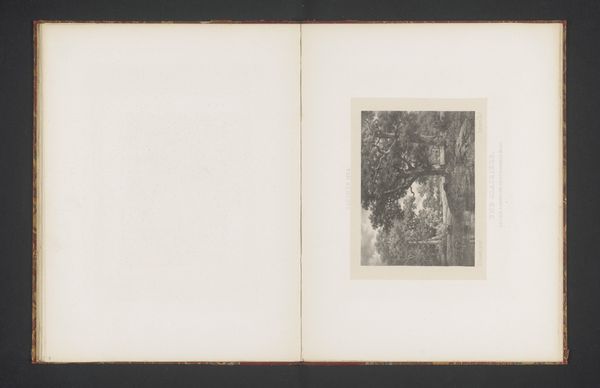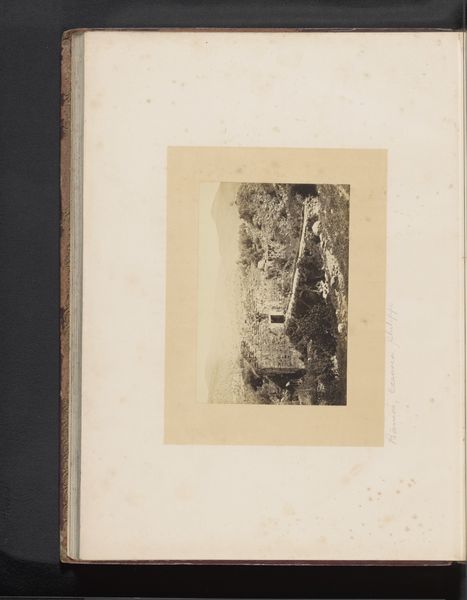
photography, gelatin-silver-print
#
landscape
#
photography
#
orientalism
#
gelatin-silver-print
Dimensions: height 104 mm, width 154 mm
Copyright: Rijks Museum: Open Domain
Curator: Here we have Francis Frith’s gelatin silver print, "Landscape with Seven Men near Nablus," dating to before 1875. It resides here in the Rijksmuseum's collection. Editor: Oh, it's like a hazy daydream. Everyone clustered there, those figures could be from a mirage or something half-remembered. And so quiet. Curator: The stillness definitely speaks to something intentional on Frith's part, invoking perhaps a kind of timeless Orient, perceived through Western eyes. This type of work falls pretty squarely within Orientalism. It often evokes both biblical associations and Western imperial dominance through a passive and receptive landscape. Editor: Right, right. The arrangement does feel staged, doesn't it? Like a play about to start, and the background mountains are this monumental backdrop...it feels kind of constructed. I'm picking up some real Romantic sensibilities as well in that haze...everything soft and...almost too gentle? Curator: Gelatin silver prints, by their nature, render such delicate tonalities. Think about how photography, even then, presented itself as utterly factual and evidential, when of course every image is shaped by selection and bias. Editor: Hmm...there is this undeniable romanticism, yes, but with an edge? I am thinking these "seven men" as signifiers...They're not really portraits are they, but sort of like figures *representing* a region? I wonder about that tension there. Like... how present is this scene versus a *perception* of it? Curator: Indeed. These early landscape photos from the Middle East were almost never without figures that lent authenticity to the view for Western audiences, though the way people were included certainly became symbolic and posed, sometimes, quite theatrically. Editor: Ah! Precisely, precisely! They perform an authenticity for the viewer, who is by definition outside of that reality, distanced, peering in. Curator: Absolutely. By showing us people amidst this seemingly empty vista, he subtly turns geography into a cultural landscape. This type of cultural imprint helps ensure, by the late nineteenth century, a new chapter in Western interest in the Levant. Editor: That makes total sense to me. Well, this piece really makes me wonder about the act of witnessing itself, how mediated it always is by our expectations. Curator: A prescient observation, I think.
Comments
No comments
Be the first to comment and join the conversation on the ultimate creative platform.
